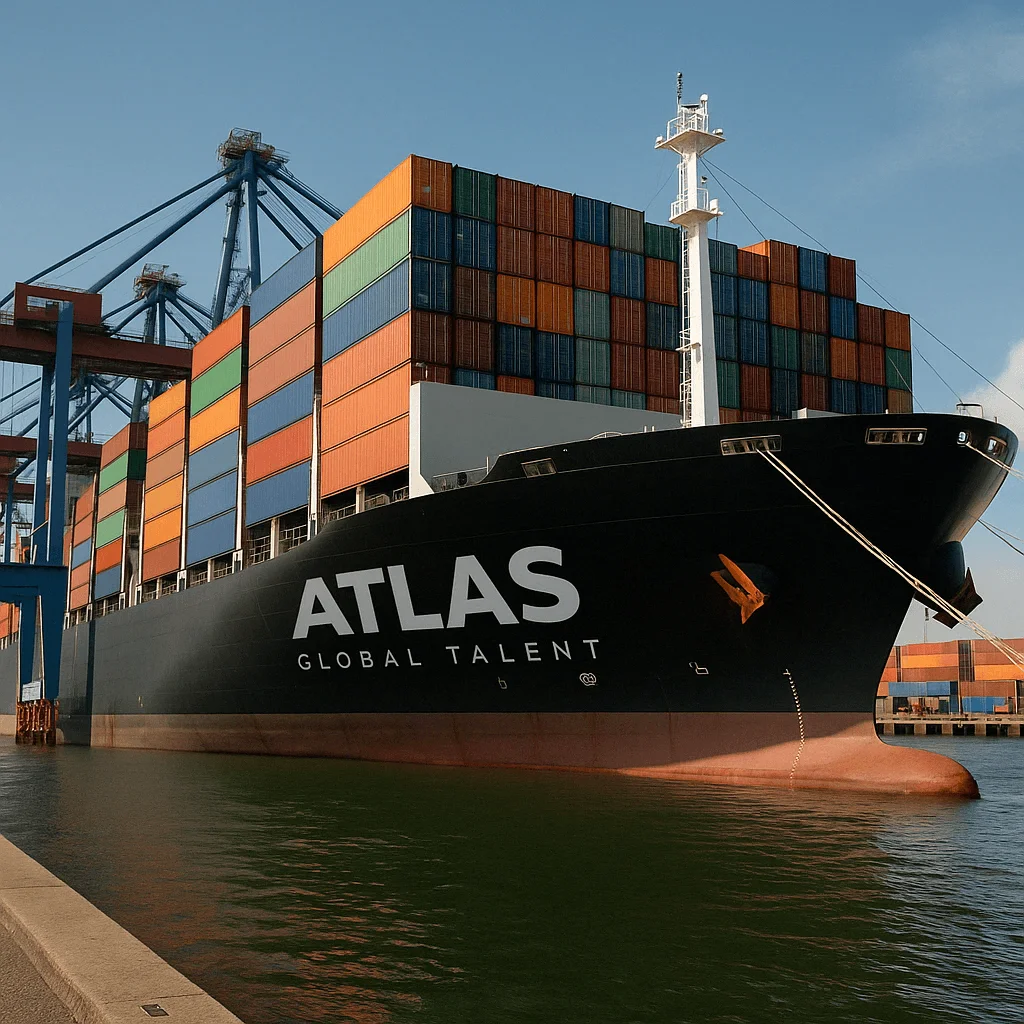Transpacific Cargo Movements from the USA
Wednesday, April 16, 2025

Other News
-
-
The Rise of Road Freight in Asia and What It Means for Recruitment
Wednesday, April 16, 2025
-
Air Freight in the USA and What It Means for Hiring
Wednesday, April 16, 2025
-
Growth in Freight Demand and Hiring Across Mexico City’s Expanding Logistics Sector
Wednesday, April 16, 2025
-
Montreal Freight Activity and the Demand for Skilled Sales Professionals
Wednesday, April 16, 2025
-
Freight Movement and Hiring Trends in the Atlanta Logistics Market
Wednesday, April 16, 2025
-
How to Recruit Top Logistics Sales Professionals in Los Angeles
Wednesday, April 16, 2025
-
Recruiting Logistics Sales Professionals in Chicago’s Competitive Market
Wednesday, April 16, 2025
-
Recruitment Struggles in the USA as Budgets Tighten and Confidence Wavers
Wednesday, April 16, 2025
-
UK and European Road Freight Trends and Challenges
Wednesday, April 16, 2025
-
Global Supply Chain Struggles and How Businesses Are Adapting
Wednesday, April 16, 2025
-
Logistics Business Development Recruitment in New York
Wednesday, April 16, 2025
-
Trump Tariff Causing Global Freight Disruptions
Wednesday, April 16, 2025
-
Global Ocean Freight and Supply Chain Pressures
Wednesday, April 16, 2025
-
Logistics Sales Recruitment in Florida
Wednesday, April 16, 2025
-
Strategies for a Changing Workforce
Wednesday, April 16, 2025
-
Why Contract Recruitment Is Gaining Ground in Logistics and Freight
Sunday, April 13, 2025
-
The Real Cost of a Bad Logistics Sales Hire
Friday, April 11, 2025
-
Why Freight Operations Managers Are in High Demand Globally
Tuesday, March 4, 2025
Export Volumes and Market Shifts
Cargo moving from the United States to Asia across the Pacific has been steady, but exporters are feeling the pressure of shifting market conditions. Demand for American agricultural goods, industrial machinery, and energy products remains strong across regions like Southeast Asia and Northern China, but recent trade developments are starting to influence how and where this freight moves.
Exporters are seeing a rise in booking times, tighter container availability, and longer port dwell times—particularly at West Coast ports. With the US now re-evaluating trade terms with major partners, some industries are feeling the knock-on effect in their freight schedules. A small delay on port clearance can lead to a missed vessel departure, which in turn holds up critical production timelines overseas.
Sectors like food processing and industrial supply are taking the brunt of the delays. Perishable cargo in particular is vulnerable, with tight timeframes needing close coordination between freight forwarders, ocean carriers, and port operators. Exporters are pushing for more reliable scheduling and improved communication from logistics providers to ensure orders make it out of the country on time.
West Coast Ports Under Pressure
Major transpacific gateways like Los Angeles, Long Beach, and Oakland continue to handle the majority of U.S. outbound cargo to Asia. These ports have the infrastructure and route access needed to move high-volume shipments quickly. But congestion is still a concern. Larger vessels, combined with vessel bunching and truck appointment backlogs, make the window for container loading narrower than ever.
Some exporters are already looking to alternative routes to avoid bottlenecks. The Port of Houston and East Coast ports like Savannah are handling more outbound volume, with shipments moving by rail or long-haul truck before boarding ships with Pacific connections. It’s not ideal, but for high-value cargo, it’s worth the extra inland transport costs to guarantee schedule reliability.
Rail is also becoming a bigger part of the outbound freight solution. Intermodal services linking Midwest manufacturing hubs to coastal ports are seeing an uptick in demand. This shift is largely driven by cost efficiency and the need to work around driver shortages in long-haul trucking. Stronger rail-port coordination will be key to scaling up this strategy.
Impact of New Trade Policies
Recent talk of additional tariffs and regulatory changes has added another layer of uncertainty to transpacific movements. While imports tend to dominate the tariff conversation, the impact on exports is just as real. If countries retaliate with duties of their own, certain U.S. products could become less attractive to Asian buyers, forcing some exporters to look toward other international markets.
Smaller businesses are particularly exposed here. Larger exporters usually have in-house legal and trade compliance support, but SMEs often rely on freight forwarders to navigate customs, tariffs, and documentation changes. Any disruption or additional paperwork has the potential to delay shipments or increase costs, affecting margins in already tight supply chains.
There’s also growing concern over container equipment shortages. While the flow of inbound cargo helps balance equipment positioning, surges in outbound bookings—especially during peak harvest or production seasons—can leave exporters scrambling. Strategic planning and early booking are now essential practices to avoid last-minute surprises.
Logistics Partnerships and Operational Agility
More U.S. exporters are leaning heavily on their logistics partners to maintain consistency and visibility in transpacific shipping. The relationship between freight forwarders, carriers, and exporters has become more critical than ever. Providers who offer real-time tracking, flexible space arrangements, and better communication are becoming the preferred choice.
The push toward digitisation in logistics is helping bridge some of the operational gaps. Shippers now expect quicker updates, automated booking confirmations, and fewer manual processes in the documentation chain. Those logistics firms that haven’t caught up are being left behind in favour of more agile and tech-forward competitors.
Resilience planning has also become part of regular operations. Businesses are preparing for disruption instead of reacting to it. This includes building buffer stock, using bonded warehouse options near ports, and creating multiple route options in case of last-minute changes. It’s a more complex way of working, but it's becoming the norm across export operations.
At Atlas Global Talent, we help logistics and freight forwarding companies find the people they need to manage the complexity of international cargo. Whether you're moving freight from a Midwest plant to the Pacific coast, managing ocean schedules, or building better end-to-end visibility into your outbound operations, we connect you with the professionals who make that happen. Our teams recruit across the UK, Europe, USA, Canada, LATAM, and Asia—so wherever your freight is moving, we’ll help you find the right people to keep it moving.

